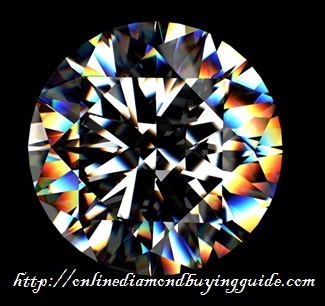Glossary of Terms ( M – Z )
Click here to view diamond definitions for keywords : A – C or D – L
The Main Facets – the first sixteen facets established on a rough diamond. The forthcoming facets during the brillianteering process are built from the base these main facets give.
Master Stone – these are very carefully selected diamonds that are used as etalons by laboratories in order to set the appropriate color grading for any diamond.
Mohs-scale – a scale developed by Friedrich Mohs in order to compare and sort different materials according to their toughness. Diamond has a value of 10 on the Mohs-scale and is considered the toughest natural material on Earth.
Pavilion – the part of the diamond situated below the girdle.
Pavilion Angle – the angle between the girdle and pavilion main facets.
Pipe Mining – A traditional diamond mining method employed since the birth of Africa’s diamond rush (see alluvial mining for the alternative). Pipe mining uses the leftover pipes of underground volcanic eruptions. Rough material is brought to surface through these pipes and later screened at specialized processing plants.
Points – a point is a hundredth of a carat, or 2 milligrams.
Polish – the final step of any diamond cutting. The quality of polish, rated from poor to excellent is a very significant component of the final cut grade.
Princess Cut – one of the most popular fancy shapes that had been developed a few decades ago. On the market of engagement rings, the square cut diamond is the next most popular diamond cut after the round cut.
Proportions – Refers to the angles and relative measurements of a polished diamond. You can typically see this in a diagram on the grading report.
Rapaport Report – one of the business setters when it comes to diamond price definition. The Rapaport report proposes a price for every combination of weight, color, clarity and cut quality between weights of 1 point and 5.99 carats.

Fire is often confused with scintillation. They are not the same thing.
Scintillation – simply refers to the reflected rays of light observed from the surface of the diamond when it moves. This phenomenon is commonly referred to as the sparkle of a diamond.
Shape – Generally speaking, people refer to the standard round brilliant cuts when talking about diamonds. Everything else is called a fancy shape or fancy cut. Common fancy shapes are pear, heart, emerald, marquise, princess, emerald and radiant cut.
Stone ID – This is a unique number that represents or identifies a particular diamond.
Surface – the quality of the diamond’s surface (heavier or lighter presence of blemishes) is a very strong criterion when it comes influencing the luster of a gemstone.
Symmetry – The arrangement of the facets and junction to junction accuracy created by the diamond cutter. Usually dependent on skill and choices made by the cutter for economical reasons. Excellent symmetry of a well-cut and well-proportioned diamond can have a great effect on the diamond’s brilliance and fire. Symmetry ratings are as follows: Excellent, Very good, Good, Fair, or Poor.
Table – The top-most and largest facet of a diamond. The majority of light enters and leaves a diamond through its table.
Table Percentage – reflects how big the table is in relation to the diamond’s width. It can be calculated by dividing the table width with the average diameter for a round brilliant cut. A popular misconception is that a small table percentage can increase the brilliance of a diamond. That isn’t necessarily true as light performance is dependent on other variables too.
Taylor-Burton – one of the newcomers to the list of world-famous diamonds. As its name suggests, it is related to the epic romance of Richard Burton and Elizabeth Taylor. This spectacular diamond weighing 69 carats was the main stone of the engagement ring which Richard Burton used to proposed to Liz Taylor. After the death of Burton, the diamond was sold and the revenue was donated to charity.
Trilliant Cut – a type of brilliant fancy shape, probably most similar to the princess cut, that has a triangular form.
Warped – A diamond that is severely out of symmetry due to poor proportions. A term coined by Fred Cuellar that raised controversial discussions by members of the trade.
White Gold – one of the most commonly used metals for diamond ring settings. White gold is not a stand-alone metal. It is an alloy of gold and nickel or palladium. The lustrous reflective white surface is a result of rhodium plating.
Zirconia – Cubic Zirconia is the most commonly used synthetic stimulant for faking diamonds. It has a density that is almost 50% larger than diamonds and can be easily identified with a thermal tester.
Can’t find what you need? Try looking at the other sections of : A – C or D – L









